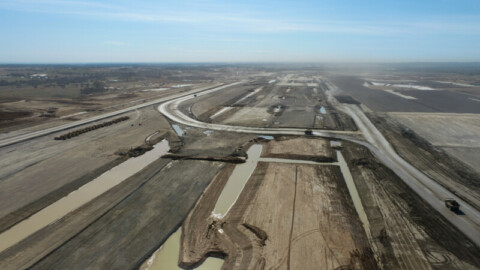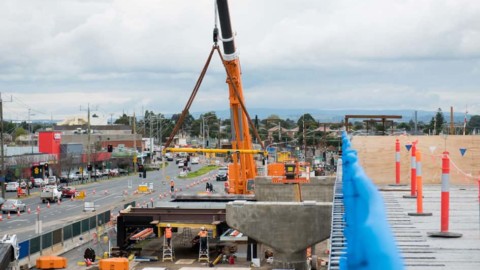The Treasurer of Australia has released the Intergenerational Report 2023, which recognises the importance of the infrastructure sector, and expects that spending will continue to increase across the industry, as it has in recent years.
The report is a long-term projection of the global forces affecting Australia’s economy, and predicts government expenditure up to 2063.
The report states that infrastructure is important for supporting socio-economic development as the population grows, and that it enables economic and productivity growth by reducing congestion and allowing goods and people to move quickly and efficiently around the country and internationally.
Infrastructure also facilitates social links and inclusion, connecting households with employment opportunities, health care services, education and community activities.
The Federal Government’s Infrastructure Investment Program makes an important contribution to nationally significant land transport infrastructure projects and is the largest component of the Government’s spending on transport infrastructure.
However, Federal Government infrastructure spending is a small part of total government spending on infrastructure, with states and territories responsible for the majority of public infrastructure spending.
The report says that Federal commitments to transport infrastructure expenditure have increased to historically high levels in recent years.
The Federal Government’s rolling 10-year land transport infrastructure pipeline has grown from $75 billion in the 2018-19 Budget (0.3 per cent of projected GDP) to around $120 billion at the May 2023-24 Budget (around 0.4 per cent of projected GDP).
This is largely delivered through the Infrastructure Investment Program, equity and loans, and other grants outside the Infrastructure Investment Program.
The report says that the increased investment in new infrastructure has been driven by population growth, a greater volume of project activity and higher construction costs.
Investment in utilities such as energy, telecommunications and digital infrastructure is expected to increase over the medium term. As will investment in port developments, housing and other forms of social infrastructure.
Infrastructure spending is not modelled over the long term. Instead, it is assumed to be at least 0.33 per cent of GDP through the medium term (consistent with medium-term Budget projections) and then held at that level through to the end of the projection period in 2062-63.
This is consistent with the recent average historical expenditure for the Infrastructure Investment Program since 2013-14.
The report predicts that a range of initiatives will improve the quality and sustainability of long-term infrastructure spending. This includes a strategic review of the Infrastructure Investment Program and better planning and coordination with states and territories with advice from Infrastructure Australia.
Embracing new technology to build infrastructure that is resilient to climate change and can manage congestion in Australia’s growing cities is also expected to provide long-term benefits. This will ensure that infrastructure investment will better meet the needs of Australians in future.
Australian Construction Association responds
Australian Constructors Association CEO, Jon Davies, said the greatest opportunities lie in the construction industry.
“The construction industry intersects with almost all the government’s priority areas and plays a pivotal role in delivering essential infrastructure for an ageing population and achieving the nation’s net zero target,” Mr Davies said.
“The financial implications are eye-watering. The construction industry holds the potential to save the Australian economy $56 billion annually.
“It can do this by bridging the current productivity gap between construction and other major industries.
“The potential productivity savings are enormous – alone, they would fund the NDIS or the aged pension.”
Mr Davies said that improving the productivity of the construction industry carries national significance.
“Just by bringing construction productivity up to the national average, we could revitalise national productivity growth, reaching levels not witnessed since the 1990s.
“We urge the government to collaborate with states, industry representatives and unions to develop a ten-year National Construction Strategy.
“This strategy would lay the groundwork for a more sustainable and productive construction industry, benefitting all Australians.”
















